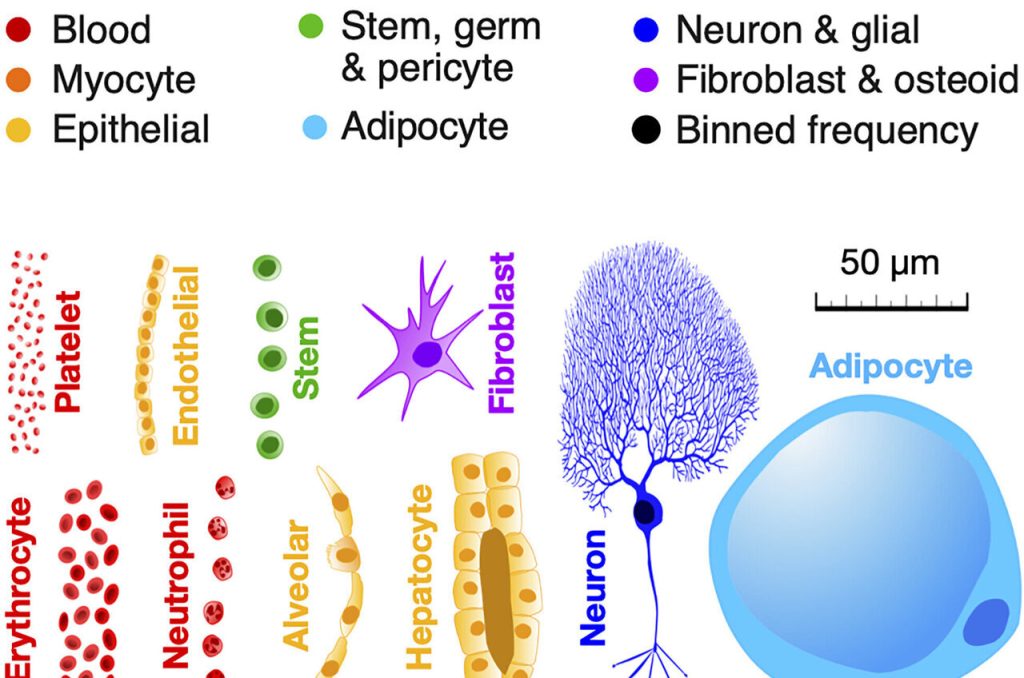In the intricate dance of biological development, cells orchestrate a symphony of movements, self-organizing into distinct tissues and structures essential for life. At the heart of this process lies the phenomenon of self-sorting, wherein cells spontaneously segregate into different groups, laying the foundation for the formation of organs and tissues. While the intricacies of cell self-sorting have long fascinated biologists, recent research at the intersection of physics and biology has shed new light on the underlying mechanisms driving this remarkable phenomenon. In this article, we explore how physicists are leveraging principles of physics to unravel the mysteries of cell self-sorting, offering insights that could revolutionize our understanding of developmental biology and pave the way for groundbreaking advances in regenerative medicine and bioengineering.
The Intersection of Physics and Biology
Physics, the study of matter, energy, and the fundamental forces of nature, may seem worlds apart from biology, the science of life. However, at their core, both disciplines share a common goal: to unravel the mysteries of the universe and understand the fundamental principles that govern its behavior. In recent years, physicists and biologists alike have recognized the potential for interdisciplinary collaboration, harnessing the power of physics to probe the intricate workings of living systems. By applying principles of physics to biological phenomena, researchers aim to uncover underlying patterns, mechanisms, and emergent behaviors that defy traditional biological explanations.
Meet Erin McCarthy: Bridging the Gap Between Physics and Biology
Enter Erin McCarthy, a physics alumna from Syracuse University whose groundbreaking research has propelled our understanding of cell self-sorting to new heights. Under the mentorship of Dr. M. Lisa Manning, McCarthy spearheaded a study published in Physical Review Letters, a prestigious physics journal, that uncovered unexpected collective behaviors among computational particles—a discovery with profound implications for developmental biology and bioengineering. McCarthy’s journey from physics enthusiast to pioneering researcher exemplifies the power of interdisciplinary collaboration and the transformative potential of merging disparate fields of study.
Decoding the Language of Physics in Biological Systems
At the heart of McCarthy’s research lies the application of physics principles to biological systems, challenging conventional wisdom and illuminating hidden dynamics at play. Using computational physics modeling, McCarthy and her team delved into the mechanisms underlying particle self-sorting—a phenomenon with striking parallels to the behavior of biological cells. By simulating the interactions between particles, they uncovered emergent behaviors that mirrored the self-sorting observed in living systems, providing a tantalizing glimpse into the fundamental principles governing cellular organization.
From Particles to Cells: Bridging the Divide
While the study of particles may seem worlds apart from the complexities of cellular biology, McCarthy’s research highlights the striking similarities between these seemingly disparate realms. Just as particles spontaneously organize themselves into distinct groups, cells exhibit collective behaviors that drive the formation of tissues and organs during development. By drawing parallels between physics models and biological systems, researchers can gain unprecedented insights into the underlying mechanisms of cell self-sorting—a crucial step towards unlocking the secrets of embryonic development and tissue regeneration.
Challenges and Opportunities: Navigating the Complexities of Biological Systems
Despite the remarkable parallels between physics models and biological systems, translating insights from the laboratory to the clinic poses significant challenges. Biological systems are inherently complex, governed by a myriad of factors ranging from genetic regulation to environmental cues. As researchers delve deeper into the intricacies of cell self-sorting, they must grapple with the complexity of living systems, navigating a landscape fraught with uncertainty and unpredictability. However, with each new discovery comes the opportunity to harness the power of physics to address pressing medical challenges and revolutionize the field of regenerative medicine.
Harnessing Physics for Biomedical Innovation
As we stand at the intersection of physics and biology, poised on the brink of unprecedented discovery, the future holds boundless promise for biomedical innovation. From decoding the language of cellular self-sorting to engineering novel therapies for tissue regeneration, researchers are harnessing the principles of physics to unlock the secrets of life itself. With each breakthrough comes the potential to transform our understanding of biology, paving the way for groundbreaking advances that could reshape the landscape of medicine for generations to come.
In the quest to unravel the mysteries of cell self-sorting, physicists and biologists stand united, driven by a shared curiosity and a determination to unlock the secrets of life’s most fundamental processes. Through interdisciplinary collaboration and a relentless pursuit of knowledge, researchers like Erin McCarthy are blazing a trail towards a future where the boundaries between physics and biology blur, and the secrets of the universe are laid bare. As we journey deeper into the realm of cellular dynamics, let us heed the call of discovery and embrace the transformative power of science to illuminate the path forward in our quest to understand the wonders of life.
